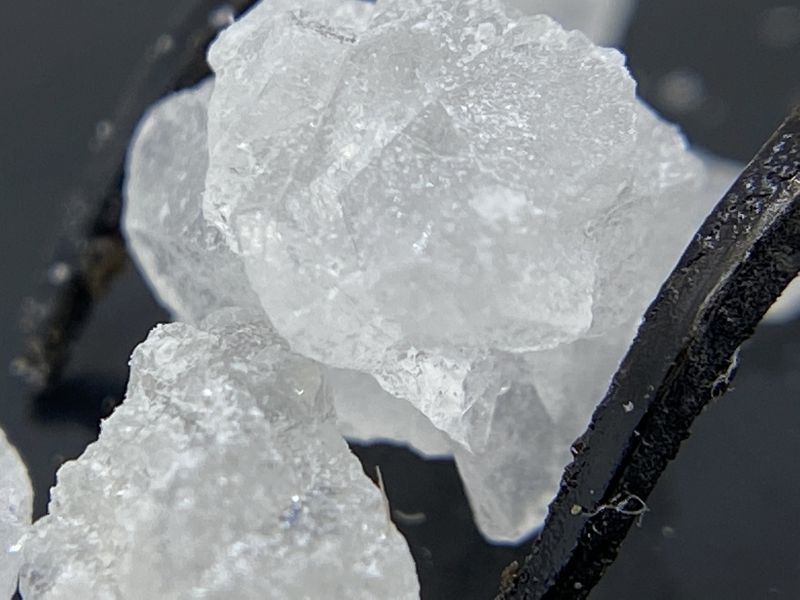In the world of cannabis, concentrates have become increasingly popular among enthusiasts. With their potent nature and diverse range of options, concentrates offer a unique experience for those looking to elevate their cannabis consumption. However, navigating through the various types of concentrates can be overwhelming for beginners or anyone who’s into extracts for that matter. That’s why this article is here to help explain the types of concentrates tin a way that makes sense to you.
You will explore the differences between the wonderful different types of concentrates, gaining a better understanding of their unique characteristics and the effects they offer.
Also in this article, I’ll dive deep into what concentrates are, the different types available, their variations, extraction methods, and how to choose the right one for you. Additionally, I’ll discuss health implications, and provide you with the necessary information to make informed decisions. So, let’s get started!
What are Concentrates?
Definition
Concentrates, also known as extracts, are highly potent forms of cannabis that have been carefully separated from the plant material to isolate the cannabinoids and terpenes. This process involves extracting the essential compounds using various methods, resulting in a concentrated substance with significantly higher levels of cannabinoids compared to traditional cannabis flower.
Purpose
The purpose of concentrates is to provide a more potent and efficient way to consume cannabis. By isolating the active compounds, concentrates offer a more intense and immediate effect, making them a popular choice for both recreational and medicinal users. Concentrates also allow users to experience different flavors, aromas, and desired effects, enhancing the overall cannabis experience.
Extraction Methods
There are several extraction methods used to produce concentrates, each resulting in unique textures, flavors, and potencies. Some common extraction methods include:
- Butane Hash Oil (BHO): This method uses a solvent, typically butane, to extract the cannabinoids and terpenes from the plant material. The solvent is then evaporated, leaving behind a sticky resin-like substance.
- CO2 Extraction: This method uses supercritical carbon dioxide to extract the compounds from the plant material. It is considered a safe and efficient method, resulting in high-quality concentrates.
- Rosin Press: This extraction method uses heat and pressure to squeeze the resinous sap from the cannabis flower or hash. It doesn’t involve the use of any solvents, making it a popular choice for those looking for a solventless extraction method.
- Solventless (Dry Sift, Ice Water Hash): These methods involve physical separation techniques such as sifting or washing the plant material in ice water to isolate the trichomes, which contain the desired compounds.
Types of Concentrates
Now that we understand what concentrates are and how they are extracted, let’s explore the different types available. Each type of concentrate has unique characteristics, offering a wide range of flavors, textures, and potencies to suit individual preferences and desired effects. Here are some popular types of concentrates:
Shatter
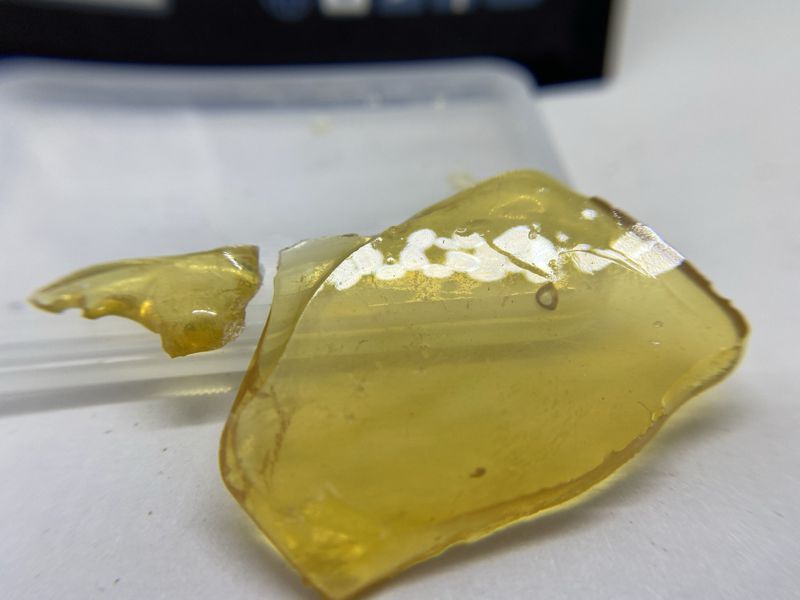
Shatter is a translucent and brittle concentrate known for its glass-like appearance. It gets its name from the characteristic tendency to shatter into small pieces when handled. With high levels of cannabinoids and THC levels up to 90%, shatter provides potent effects and is often used for dabbing.
Wax
Wax is a concentrate known for its soft, oily, and creamy texture. It has a wax-like consistency and is easy to manipulate. Wax concentrates range in potency and are commonly used for dabbing or as an ingredient in edibles.
Budder
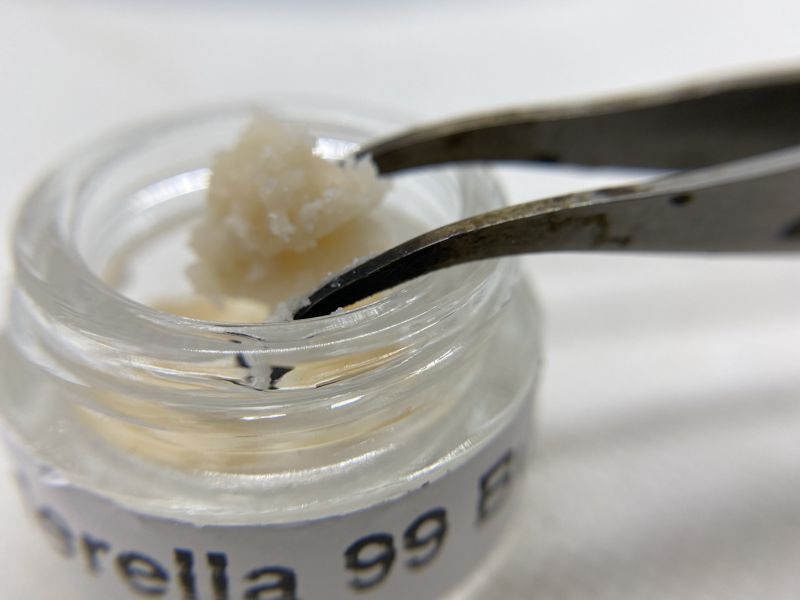
Budder is a concentrate similar to wax but has a softer and more crumbly texture. It can be easily spread or scooped, making it convenient for dabbing or vaporizing. Budder concentrates often have a creamy and buttery consistency.
Crumble
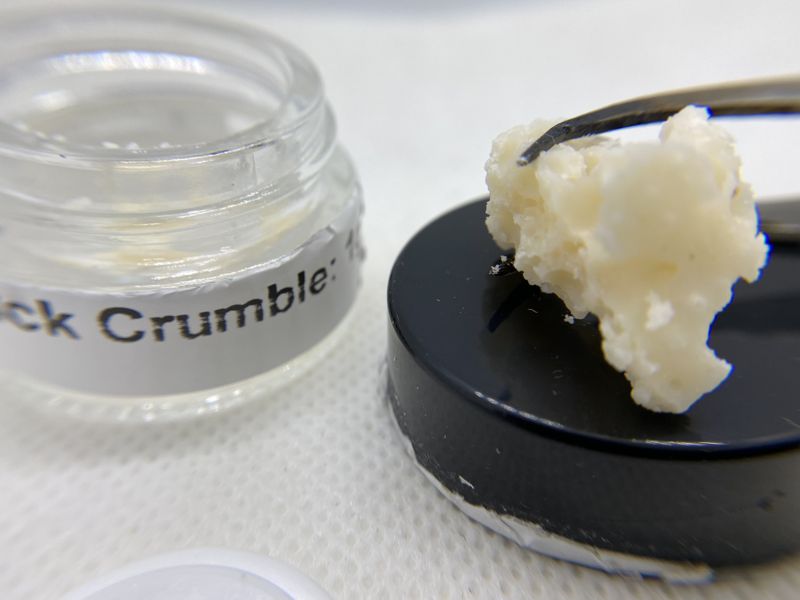
Crumble is a concentrate that resembles honeycomb or crumbled cheese. It has a crumbly texture and is easy to handle. Crumble concentrates are versatile and can be used in various consumption methods, including dabbing and mixing with flower.
Live Resin
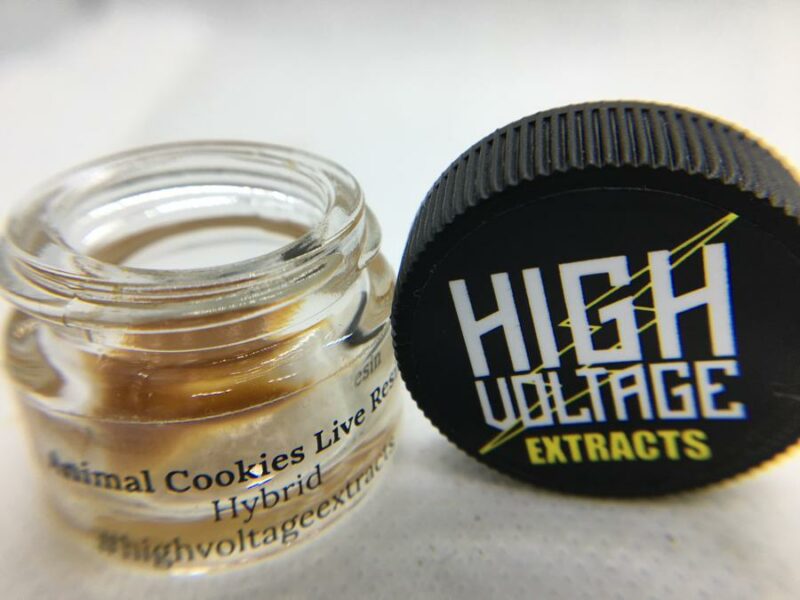
Live resin is a concentrate known for its intense aroma and flavors. It is made from freshly frozen cannabis flowers, preserving the terpenes and resulting in a more vibrant and flavorful concentrate. Live resin is commonly used for dabbing or vaporizing.
Rosin
Rosin is a solventless concentrate made by applying heat and pressure to cannabis flowers or hash. It has a sticky texture and offers a clean and flavorful experience. Rosin can be dabbed, vaporized, or used to enhance the potency of flower when smoking it.
Hash
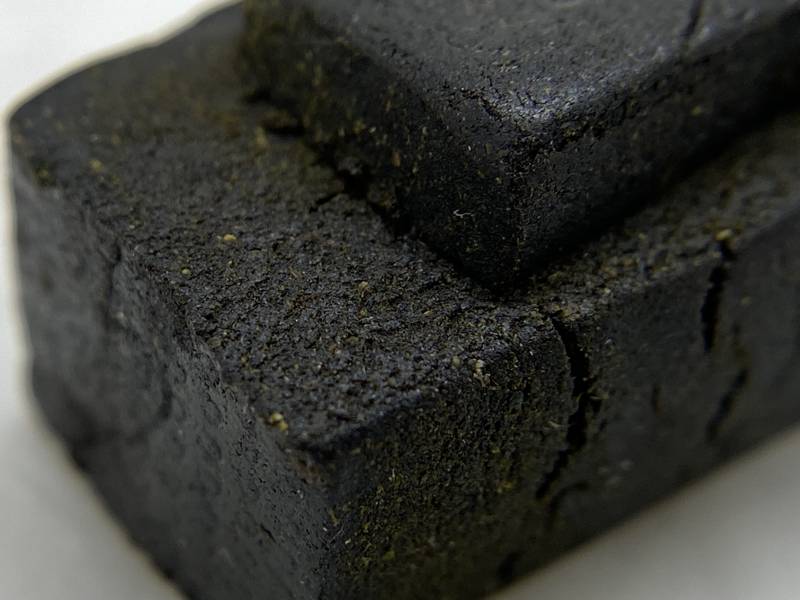
Hash, also known as hashish, is one of the oldest and most traditional forms of cannabis concentrate. It is typically made from the resinous trichomes of the cannabis plant, resulting in a solid or semi-solid form. Hash can be smoked, vaporized, or used in edibles in some cases.
Distillate
Distillate is a highly purified concentrate known for its high potency and versatility. It is made through a process called distillation, which isolates specific cannabinoids, resulting in a THC or CBD-dominant product. Distillate can be used in cartridges, edibles, or applied topically.
Sauce
Sauce, also referred to as terp sauce, is a concentrate known for its high terpene content. It has a syrupy consistency and contains large crystals of THC or CBD surrounded by a terpene-rich liquid. Sauce is often used for dabbing to enjoy the full flavor profile.
CBD Oil
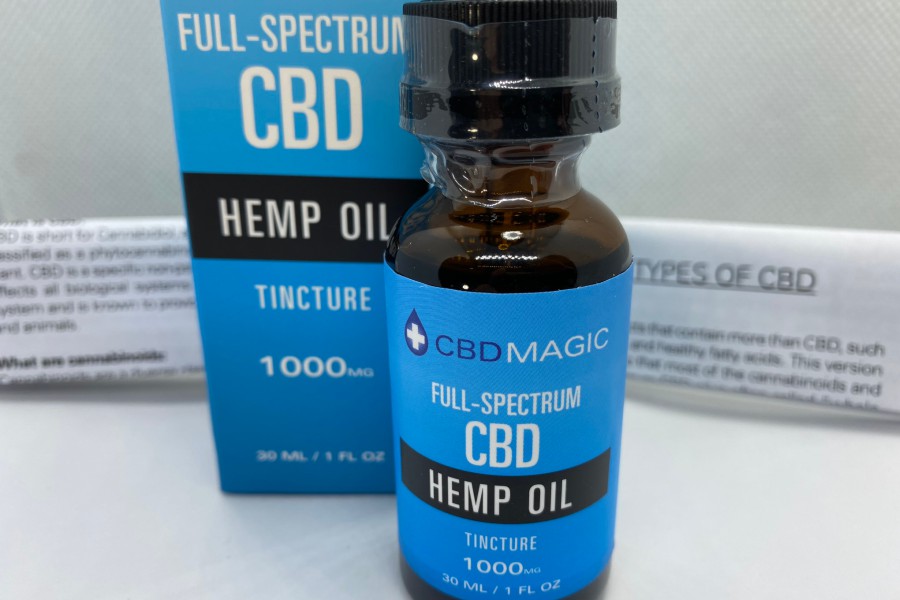
CBD oil is a therapeutic extract derived primarily from hemp plants, although it can also be sourced from certain strains of cannabis. Unlike THC, CBD doesn’t produce psychoactive effects, making it a go-to option for those looking to experience the health benefits of cannabis without the “high.”
Rich in anti-inflammatory and anti-anxiety properties, CBD oil has gained massive popularity for its potential to alleviate a range of conditions, from chronic pain and inflammation to stress and anxiety disorders. Available in various forms such as tinctures, capsules, and topicals, CBD oil provides a versatile and accessible way to incorporate the benefits of cannabis into your wellness regimen.
Differences Between Concentrates
Now that we have explored the various types of concentrates, let’s delve into the key differences between them. Each concentrate has its distinct appearance, texture, extraction process, cannabinoid and terpene profiles, potency, and optimal consumption methods. Understanding these differences will help you choose the right concentrate for your needs.
Appearance
Concentrates can range in appearance from translucent and glass-like (shatter) to opaque and creamy (wax). Some concentrates, like live resin and sauce, may have liquid consistency with visible terpene crystals. Hash and kief are typically solid or semi-solid in form.
Texture
The texture of concentrates also varies depending on the extraction method used. Wax and budder have soft and crumbly textures, while shatter is brittle and easy to break. Crumble has a drier, honeycomb-like texture, and live resin can be sticky and gooey.
Extraction Process
The extraction process plays a significant role in determining the characteristics of each concentrate. BHO extracts using solvents, CO2 extraction uses supercritical carbon dioxide, rosin is extracted through heat and pressure, and solventless methods employ physical separation techniques without the use of any solvents.
Cannabinoid and Terpene Profiles
Each concentrate has its unique cannabinoid and terpene profiles, contributing to the overall effects and flavor. Shatter and distillate, for example, often have high THC concentrations with little to no terpenes, while live resin focuses on preserving a broad range of terpenes for enhanced aroma and flavor.
Potency
Cannabis concentrates are renowned for their high potency, often containing THC levels that range from 60% to 99%, far exceeding the 10-30% typically found in dried cannabis flower. Potency refers to the concentration of cannabinoids including THVC present in a concentrate. The potency can vary greatly between different concentrates, with some like distillate being highly potent, while others like sauce or terpene isolates like live resin having a lower cannabinoid content.
Consumption Methods
Different concentrates require different consumption methods. Shatter, wax, and crumble are commonly used for dabbing or vaporizing. Hash can be smoked or vaporized, while distillate is often used in cartridges or as an ingredient in edibles. Rosin can be dabbed, vaporized. Almost all types of concentrates can be mixed with flower when rolling a joint.
How to Choose the Right Type of Cannabis Concentrate
Choosing the right concentrate can be a subjective and personal decision. Factors to consider include personal preference, desired effects, potency, flavor profile, and consumption method. Here are some considerations to help you make the right choice:
Personal Preference
Your personal preference is crucial when choosing a concentrate. Do you prefer a solid form like shatter or a softer texture like budder or wax? Consider the appearance, texture, and handling characteristics that align with your consumption preferences.
Desired Effects
Different concentrates may offer different effects due to their cannabinoid and terpene profiles. If you’re seeking a more euphoric experience, concentrates with higher THC content like shatter or THC Diamonds might be suitable. On the other hand, if you’re looking for more relaxing and calming effects, concentrates with higher CBD content might be a better choice.
Potency
Consider the potency of the concentrate based on your tolerance and desired intensity. Highly potent concentrates like distillate or shatter will provide a more immediate and powerful effect, while concentrates with lower THC or CBD levels will offer a milder experience.
Flavor Profile
The flavor profile of a concentrate can greatly enhance your overall experience. If you enjoy rich and aromatic flavors, concentrates like live resin or sauce with high terpene content might be ideal. On the other hand, some individuals prefer a more neutral taste, making distillate or terpene isolates a better choice.
Consumption Method
Lastly, consider the consumption method that aligns with your lifestyle and preferences. If you enjoy the ritual and intensity of dabbing, concentrates like shatter, wax, or budder are suitable. If you prefer a more discreet and portable option, vape cartridges or edibles made with distillate might be preferable.
Purchasing concentrates online Canada
To ensure legal compliance and product quality, purchase concentrates from licensed and reputable retailers. Licensed dispensary storefronts or online platforms can provide you with properly sourced and tested concentrates, ensuring safety and adherence to quality control standards.
Impact on Health
While concentrates offer a more potent and efficient way to consume cannabis, it’s essential to be aware of the potential health implications. Here are some considerations regarding purity, inhalation risks, adverse effects, and potential medicinal benefits:
Purity and Contamination
When purchasing concentrates from reputable sources, there are fewer concerns about purity and contamination. Licensed retailers ensure that products are thoroughly tested for contaminants, ensuring a safe and reliable product.
Inhalation Risks
Inhalation methods such as dabbing or vaporizing concentrates may pose some risks. It’s important to use the appropriate equipment and ensure that the temperature is not too high to avoid potential harm. Additionally, for individuals with respiratory conditions or concerns, alternative consumption methods like edibles or tinctures may be more suitable.
Adverse Effects
Like any cannabis product, concentrates can have adverse effects, especially if consumed in excess or by individuals sensitive to THC or CBD. These effects may include increased heart rate, dry mouth, dizziness, anxiety, or impairment of cognitive function. Start with a small dose and gradually increase to minimize any potential adverse effects.
Medicinal Benefits
Cannabis concentrates, particularly those with higher CBD content, have shown potential therapeutic benefits. CBD is known for its anti-inflammatory, analgesic, and anxiolytic properties. It may help alleviate symptoms associated with conditions such as chronic pain, anxiety, epilepsy, or nausea. However, it’s crucial to consult with a healthcare professional before incorporating concentrates into a medicinal regimen.
Conclusion
Concentrates offer a highly potent and versatile way to enjoy the benefits of cannabis. With a vast array of types, textures, flavors, and consumption methods available, there’s a concentrate to suit every preference and desired effect. Remember to consider personal preferences, desired effects, potency, flavor profile, and legal considerations when choosing a concentrate. Additionally, be mindful of the potential health impact and follow legal guidelines and safety standards to ensure a safe and enjoyable experience.
Cheers to a delightful and informed cannabis journey!
The Chronic Beaver
Here is a great YouTube video breaking down the world of concentrates.

